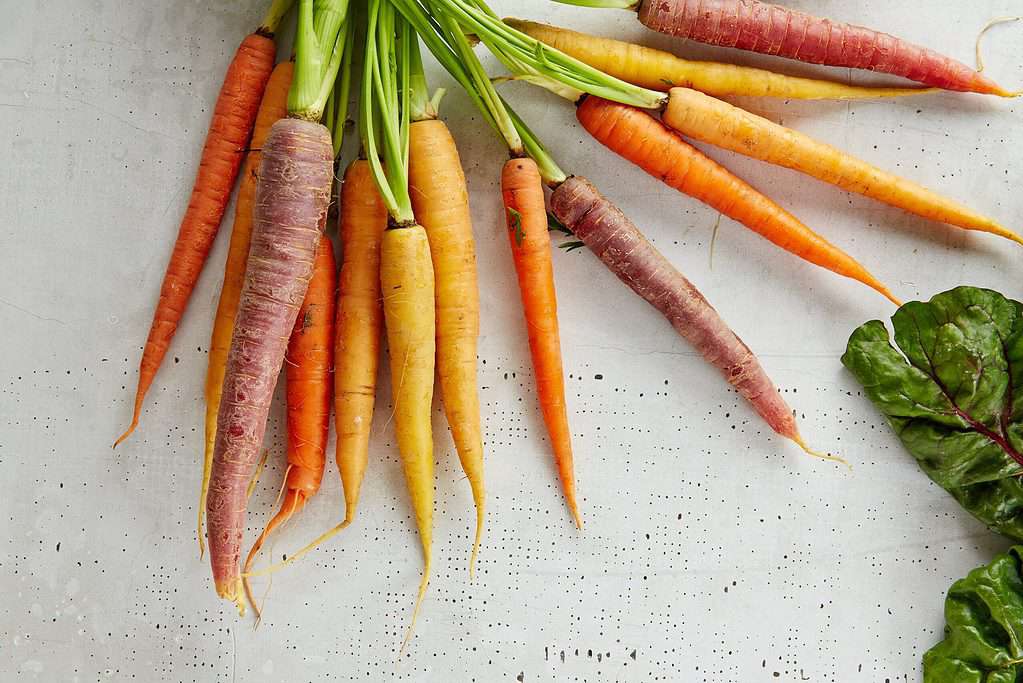Carrots are one of the most popular and widely consumed vegetables in the world, but they’ve undergone quite a metamorphosis in the past few centuries. Believe it or not, carrots were originally purple and looked way different than they do today.
A purple carrot (or Eastern carrot) would come as a major surprise for most people nowadays — but before the 17th century, that was pretty much the color of all cultivated carrots. There were also some yellow and some white varieties, but orange carrots were a rarely seen sight.
So what happened? The answer lies in a story riddled with genetics.
History of carrots
The history of carrots is hazy, but it can be probably traced back to ancient Persia, where purple and yellow varieties were grown. Three thousand years ago, these early carrots were prized for their sweet, earthy flavor and were used as a popular medicinal herb. In fact, carrots may have been initially aromatic leaves and seeds rather than their roots, much in the sense that some of the carrots’ relatives (like parsley or coriander) are used today.
The Romans used the carrots the same way, but they also cooked the roots. By this time, there were at least three varieties of carrots. In the 6th-century AD, a copy of the Greek physician Dioscorides‘ 1st-century pharmacopeia of herbs and medicines, De Materia Medica, mentioned these three types of carrots, and the text states that “the root can be cooked and eaten.”
The plant became popular in the Arab world and was introduced to Spain by the Moors. By the 11th century, the modern carrot had already become established. Although 11th-century Jewish and Arab scholars mention both red and yellow carrots, a variety of purple carrots that originated in Afghanistan had become dominant. By the 17th century, these carrots had spread to Europe, China, and Japan.
Then, the Dutch came in.
Orange carrots
At the end of the 16th century, Dutch growers started to do some research and testing, to improve the quality of the vegetables. They took mutant strains of purple carrots as well as yellow and white ones and started crossing them. Gradually, after numerous generations, they got to the sweet orange variety we recognize today, which was also more resistant to pests and better tasting.
The new orange carrot quickly became more and more popular and it wasn’t long before it started replacing the older purple and yellow varieties — this was due in large part to the greater yields and sweeter flavor of the orange carrot, which made it a more appealing choice for farmers and consumers alike. But the lobby from the Dutch traders also helped. From the 17th century on, the vast majority of carrots became purple.
From purple carrots to the orange ones we have now
From a chemical standpoint, the change in color comes from a pigment called carotene, which is found in high concentrations in orange carrots. This pigment gives the carrot its bright orange color and is also a rich source of Vitamin A, a crucial micronutrient for human health.
Purple carrots contained less carotene and more anthocyanins — a group of antioxidants found in red, blue, and purple fruits and veggies. Anthocyanins are also important for human health, but they have different nutritional qualities than carotene. The selective breeding of carrots reduced the quantity of anthocyanins in the purple carrots and increased the quantity of carotene.
But carrot breeding hasn’t stopped. Researchers are working on new cultivars that are denser in nutrients and are enriched in vitamins.
For instance, the Vegetable Improvement Center at Texas A&M University further continued carrot selection and created carrots with purple skin and orange flesh, rich in cancer-preventing substances and with a high concentration of nutrients. Through careful selective breeding, you can get a whole variety of carrot colors. But even if many people know this, thinking about a purple carrot still boggles the mind.
Besides, purple and white varieties have emerged as delicacies and are experiencing a resurgence in popularity.
So who knows, we may have not heard the final word on carrots’ color. Who knows what the future has in store for carrots — what colors could they have next?





